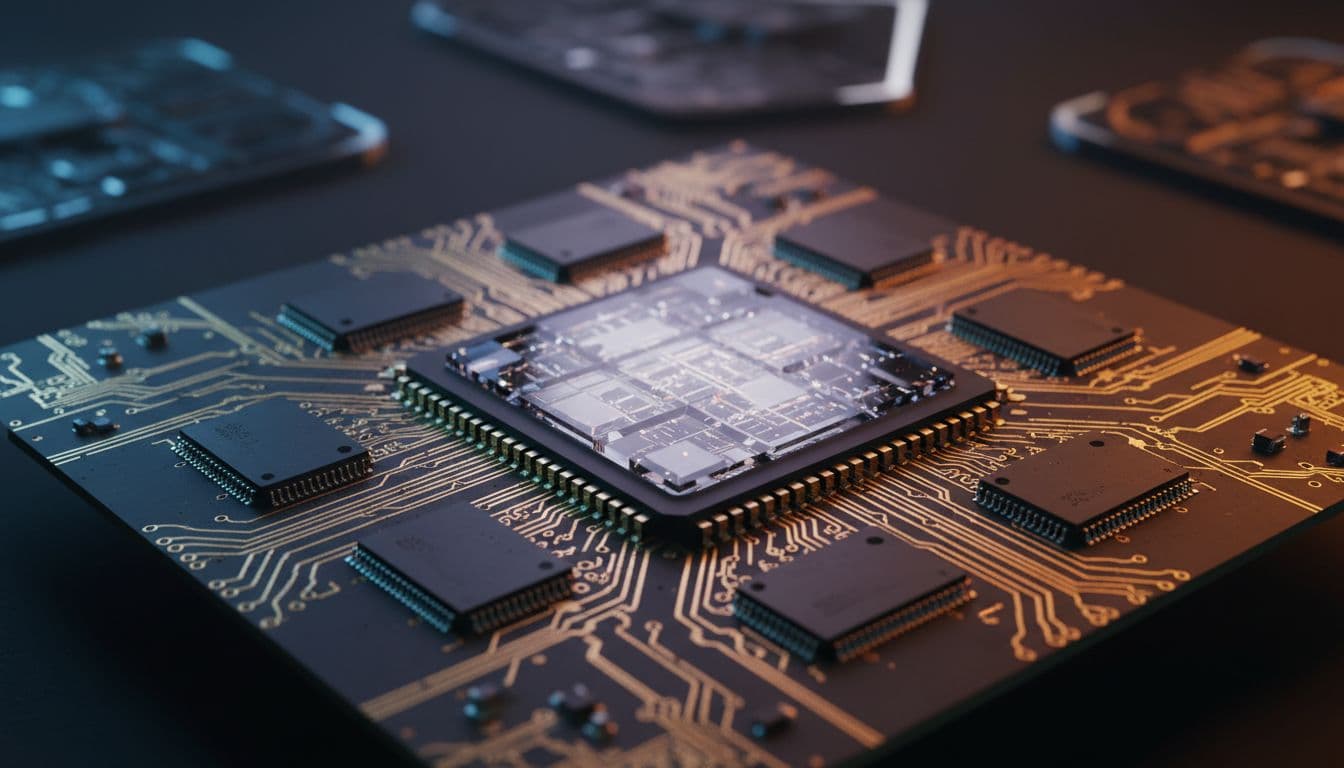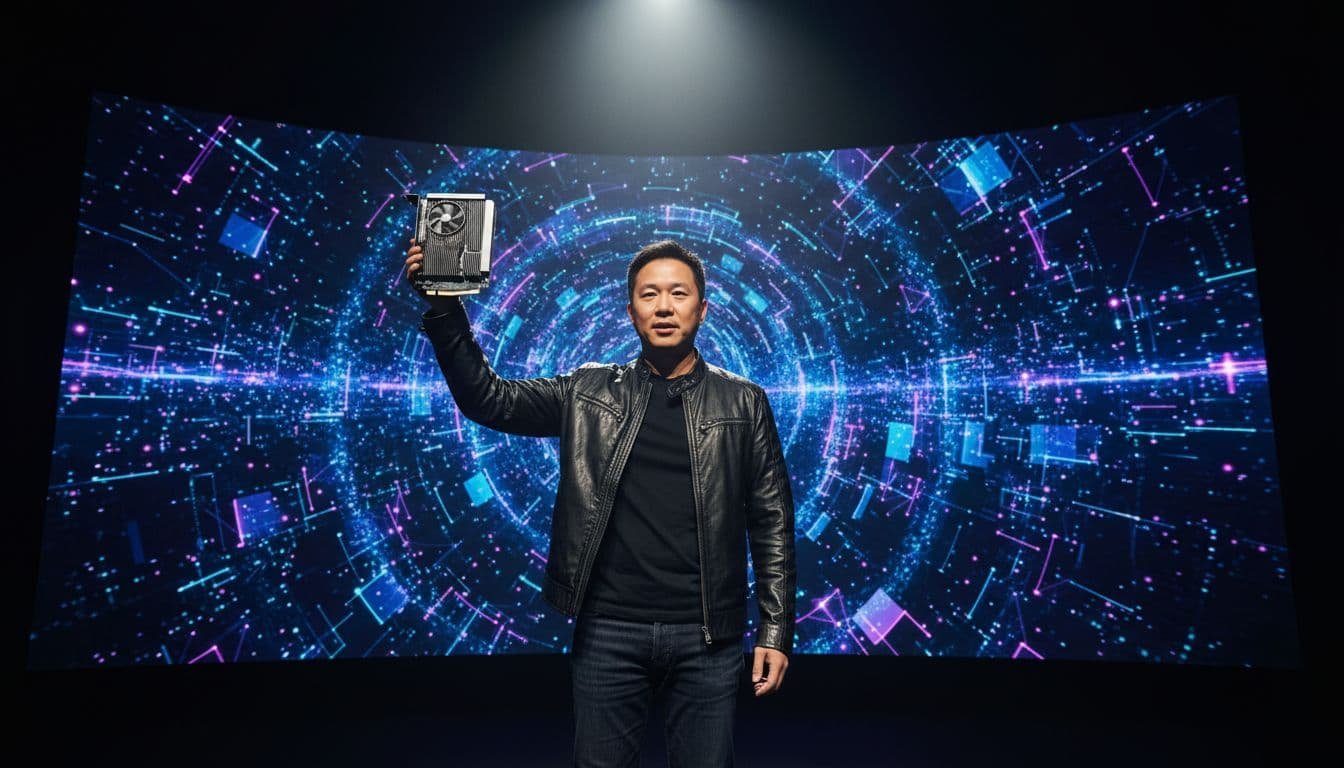Nvidia did what once sounded impossible. It became the first $5 trillion company. At the center is Jensen Huang, the co-founder and CEO who bet big on AI before most of the world paid attention. This is the story of how bold vision, tight execution, and a clear playbook turned a graphics chip maker into the engine of the AI economy.
The Early Bet That Changed Everything
Jensen Huang saw a shift early. Graphics processors were great at parallel computing. That strength made them perfect for training neural networks. While others focused on gaming alone, Nvidia built CUDA, software tools, and developer support. This let researchers and startups use GPUs for AI. When AI took off, Nvidia was already the default choice.
This was not luck. Nvidia invested in a full stack. Chips, boards, networking, software, and libraries all worked together. Developers could get started fast, scale up, and ship products. The more people built with Nvidia tools, the stronger the flywheel got. Demand pulled more demand.
The Data Center Became the Core Business
Gaming was the brand. Data centers became the business. As large models grew, companies needed compute at a new scale. Cloud providers, social platforms, automakers, and model labs all raced to secure GPUs. Nvidia answered with dedicated data center products like the A100, H100, and next-gen platforms. Each generation pushed performance and efficiency higher.
Huang’s team did not just sell chips. They sold systems. Racks, networking, and software that could power training clusters and inference at scale. That approach lifted average deal sizes and locked in long-term roadmaps with customers. It also turned Nvidia into a partner, not just a vendor.

The Platform Play: From Chips to Ecosystem
Nvidia’s moat is not just silicon. It is an ecosystem. CUDA, TensorRT, cuDNN, and a web of SDKs reduce friction for developers. On top of that sit domain platforms like Nvidia AI Enterprise and Omniverse for 3D and robotics. This stack approach means customers can build, deploy, and scale without stitching everything together themselves.
Huang also leaned into partnerships. Cloud providers built GPU instances by the tens of thousands. Enterprise software vendors integrated Nvidia acceleration. Startups built their products around Nvidia compute. Even telecom and industrial partners looked to Nvidia for the next wave of AI at the edge.
Relentless Roadmaps and Supply
Another key: cadence. Nvidia set a rapid release rhythm. New architectures landed on a tight schedule, often with major performance gains. Customers could plan capacity, budgets, and launches around reliable updates. At the same time, Nvidia worked across the supply chain to secure advanced packaging, memory, and networking parts. When demand surged, Nvidia had a path to deliver.
Packaging and interconnects moved the needle too. NVLink, Infiniband, and advanced memory let clusters act as one giant GPU. This mattered for training frontier models and for supporting high-throughput inference. The result was speed, scale, and predictable performance.
AI Beyond the Data Center
The next growth loops came from AI moving into every industry. Robotics, automotive, healthcare, design, and telecom all need accelerated computing. Nvidia extended its platforms into these fields. For cars, it offered end-to-end compute for autonomous features and infotainment. For robotics, it provided simulation, planning, and real-time perception. For media, it powered generation, rendering, and broadcast workflows.

Leadership Style: Clear, Hands-On, Customer-Obsessed
Jensen Huang’s leadership blends product taste with discipline. He stays close to customers and builders. He can explain architecture on stage, then discuss workflows with creators and researchers. This gives Nvidia a tight feedback loop. The company ships what the market truly needs, not just what is easy to make.
Communication matters too. Huang speaks in plain language about hard topics. He frames Nvidia as an AI factory, turning data into intelligence. This narrative helps align the company internally and set expectations with partners and investors.
Why the Market Crowned Nvidia
- It owns the critical bottleneck: AI compute at scale.
- It sells a full stack: chips, systems, networking, and software.
- It runs a reliable roadmap and supply plan.
- It has deep developer loyalty and tools that save time and cost.
- It keeps expanding into new AI use cases across industries.
Put together, this produced explosive revenue growth and strong margins. Each product cycle expanded the installed base. Each new workload found a home in the Nvidia ecosystem. That compounding effect pushed the company into historic territory.
What Comes Next
The AI wave is not over. Training will stay intense. Inference will grow even faster as apps move into production. Enterprises will build private models. Governments will fund national compute. Edge devices will need smarter, faster chips. Nvidia is building for all of it, from data centers to vehicles to robots to PCs.
Competition is real. Custom silicon, new accelerators, and open software stacks are rising. But Nvidia’s advantage is the combination of performance, tools, and trust. If it keeps shipping on time and listening to its users, it can defend share even as the market widens.

Key Takeaways for Builders and Investors
- Bet on platforms, not parts. Own the experience, not just the component.
- Make developers your priority. Great tools create loyalty and lock-in.
- Ship on a cadence. Reliability beats surprise. Customers plan around you.
- Turn customer feedback into product specs. Shorten the loop.
- Expand where your stack already gives you an edge. Aim for compounding moats.
Final Word
Nvidia’s rise to $5 trillion started with a simple idea: general-purpose parallel compute could power new kinds of intelligence. Jensen Huang stuck with that idea, built the tools, partnered widely, and kept shipping. The result is a company that does not just ride the AI wave; it builds the surfboards and the ocean. If the next decade runs on accelerated computing, Nvidia’s story is only getting started.
Note: This article is an original analysis based on publicly available information and industry trends. Want me to compress these images and add srcset sizes for faster load and better Core Web Vitals? I can also add image credits or EXIF-friendly captions if you need them.
To contact us click Here .






